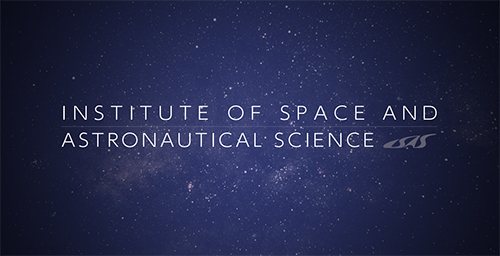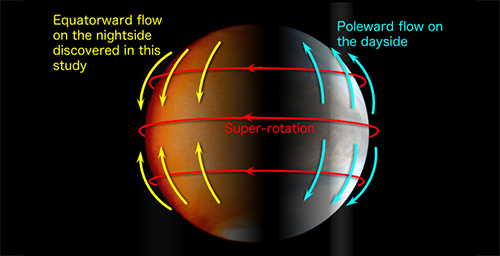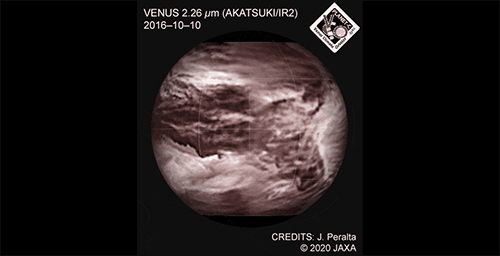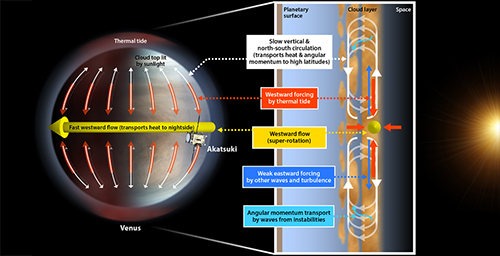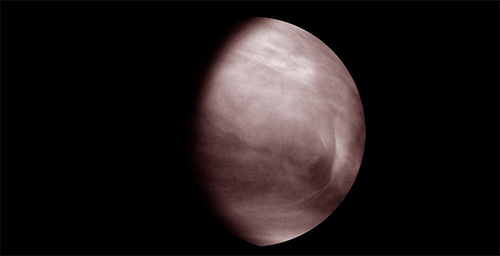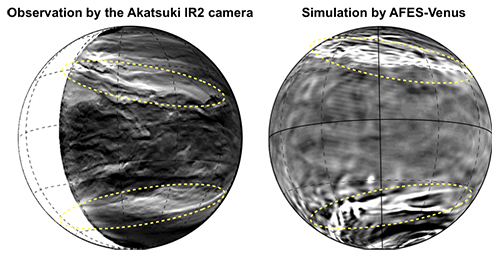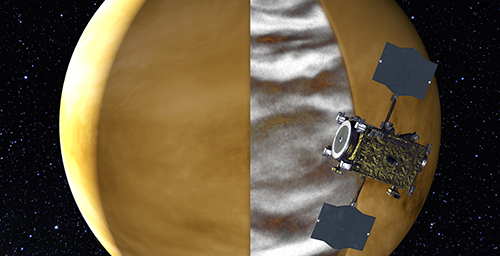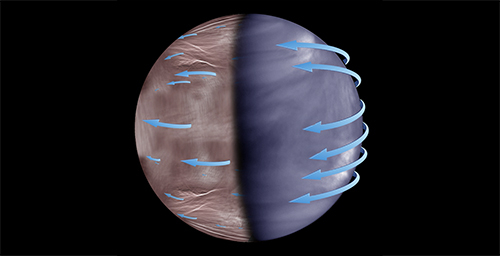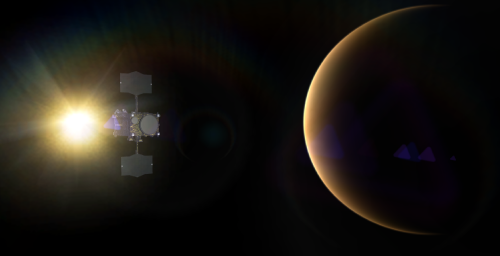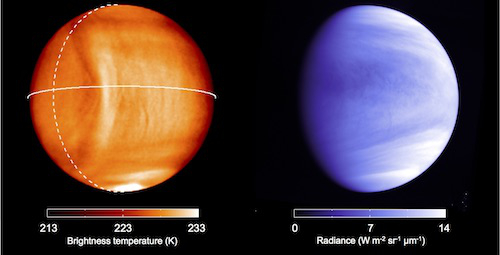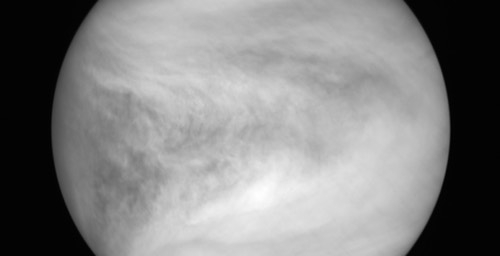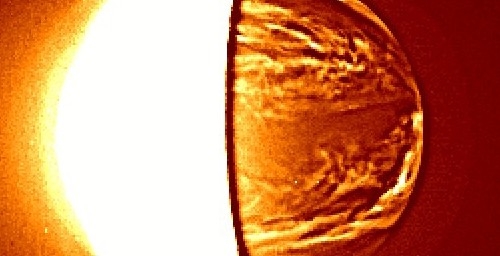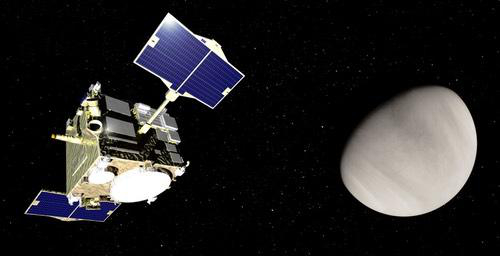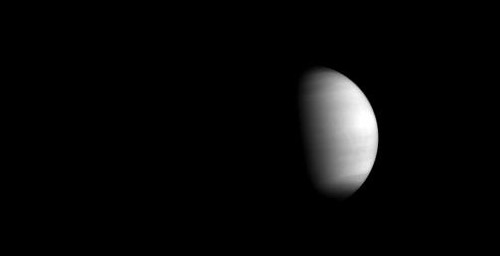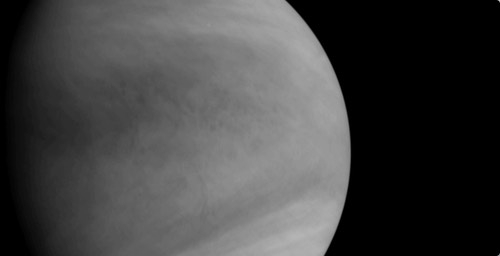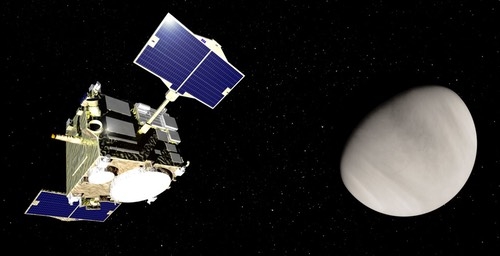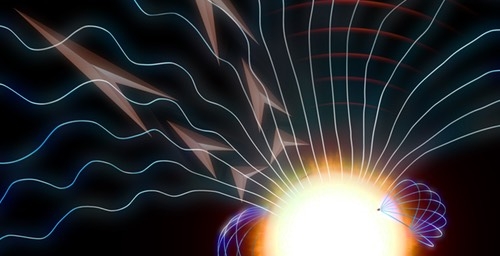This video clip shows a synthesized pseudo-color animation of Ultraviolet Imager (UVI) onboard Venus Climate Orbiter, Akatsuki, with the 283-nm and the 365-nm filters. There is absorption by sulfur dioxide at the wavelength of 283 nm, so some clouds where sulfur dioxide exists look dark due to the absorption of sunlight.
At the wavelength of 365 nm, there is absorption by an unknown absorber,
so some clouds where an unknown absorber exists also look dark.
Images with both of the wavelengths are considered observing around cloud top, about 70 km altitude.
In this pseudo-color animation, a 283-nm image is assigned to a blue, 365-nm image is assigned to red, and the mixture of these two images is assigned to green.
This animation starts from November 16, 2018, and ends on December 7, 2018. The time at upper-left shows observation time in UTC, while the numbers at the lower-left show angle between the direction of the spacecraft seen from Venus and direction of the Sun. The spacecraft altitude can be found at the lower-right.
We can obtain various information from this animation. Firstly, clouds cover all over the planet, and we could not see the surface of Venus under the clouds. This clouds consist of sulfuric acid. The clouds flow from right (east) to the left (west) everywhere, because there is a fast wind of 100 m/s called super-rotation in Venus. One of the purposes of Akatsuki is to investigate the mechanism of this super-rotation.
A vast darker region which has a shape of laid V or Y, letters of the alphabet, flows westward with changing its shape. This kind of pattern could not be seen at the other planets, so the formation mechanism of this pattern is still unknown. The color of the darker region varies with time, the reddish region includes a relatively large amount of sulfur dioxide and the reactant of the sulfuric acid clouds. The bluish region includes a relatively large amount of the unknown absorber which causes yellowish Venus specific color.
At mid-latitudes, oblique streaks are seen. These streaks seem generated by elongated clouds slantwise. Clouds seem to be transported from the equator to the poles, however, northward/southward circulations with one cell for each hemisphere could not be seen in the Earth.
As atmosphere flows westward, it spreads northward and southward, and fine-grained clouds seem to be more explicit. These fine-grained clouds give the impression that these are similar to cumulonimbus in the Earth,
however, a mechanism of these fine-grained clouds is still not well understood.
Four-dimensional data assimilation, which can enable us to fuse continuous data like these images used in the animation and numerical simulation, is also one of the purposes. The data assimilation enables us to reproduce phenomena in the simulation even not directly captured, and we will try to reveal the atmospheric circulation of Venus.

